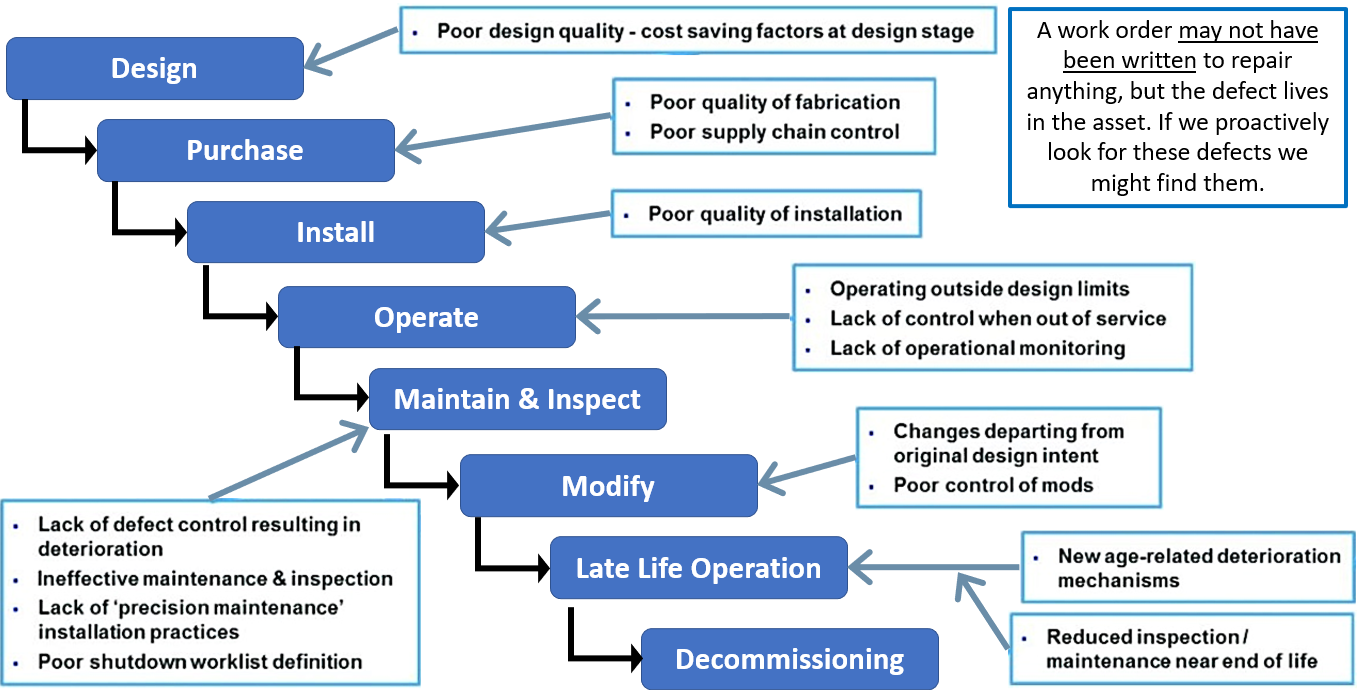
Introduction
Reliability of assets is an expectation in every organization. Lots of time and money is spent annually to ensure asset’s availability. Experts know that rather than waiting for an equipment to fail and then try to fix it, it is a whole easier and cheaper to minimize the chances of failure by spotting early defects and fixing it before it causes a breakdown.
Simply put, defects are anything that creates waste, reduces production, erodes value and generally exposes the organization’s staff and its environments in grave danger. Defects are traced to:
- Poor quality of storage and handling of raw materials, and parts.
- Operations and the way the equipment are operated.
- Poor procedure and lack of training of hired technicians.
Defect elimination is therefore spotting these defects and eliminating them before they cause a major breakdown.
Jidoka is a concept practiced in the Toyota production system. It refers to the ability for humans and machines to detect an abnormal condition in materials, machines, and methods and to prevent the abnormality from being passed on to the next process. When defects are detected, the root cause, and not the symptom is to be determined, and to immediately implement counter measures to eliminate such defects.
For example, a defect resulting from installation of wrong part might be discovered, but installation of the wrong part may only be a symptom of a more deeply rooted problem rather than the real cause. Careful investigation might reveal that the wrong part was installed because a sketch in the operation instruction sheets was difficult to read, or it was prone to misinterpretation, or even that a team member is just inattentive.
In Japan, operators in a plant carry wrenches and are empowered to tighten loose nuts. The goal is to ensure the loose nuts are tightened rather than waiting for the equipment to break and then fix it. This is the essence of Total Productive Maintenance.
Defect Elimination Culture:
Defect elimination isn’t a job designed strictly for the maintenance team. It is expected that every functional staff in the organization is observant enough to spot a defect and eliminate it immediately. For such a widespread workforce engagements, a defect elimination culture must be adopted. This can be achieved in three steps:
- Encourage every employee including core contractors to be actively engaged in the defect elimination process.
- It is not enough to understand the effects of defects and how to identify them. It is essential that identified defects must be removed from its root cause.
- Finally, a system must be implemented to support the coordination of activities and to celebrate success.
Defect Elimination and General Reliability:
To achieve general reliability in any organization, first there must be a general understanding that failure of assets is the consequence of unattended early defects. There is a direct connection between equipment reliability and product defects.
Next, it is imperative that upper managers create an environment that encourage staffs to become directly involved in defect elimination. This creates a strong culture in reliability improvement.
In essence, it’s a two-way thing, both the employee and the employer must ensure that defects are eliminated at all process.
The Simple ABC's of Failure
Failures happen because things are not perfect. So to minimize failure is to identify and eliminate as much imperfections as possible. Studies have shown that failures are generated from three major sources. They are:
- Aging: This failure is as a result of over long period of time of assets. Assets within this category can show defects even if not operated at all.
- Basic wear and tear: Failures of assets within this category have shorter periods of time depending on the equipment’s quality.
- Careless Work Habits: This is the failure that happens when the equipment is not provided with the appropriate care it needs to function perfectly such as lack of discipline to operate, lack of proper training, etc.
Studies also reveals that careless work habits contributes to about eighty four (84) percent of defects that become failure.
References : Reliabilityweb.com, Uptime Elements, The Fixers

Excellent.